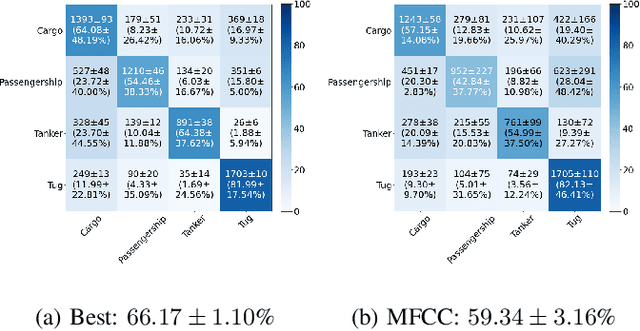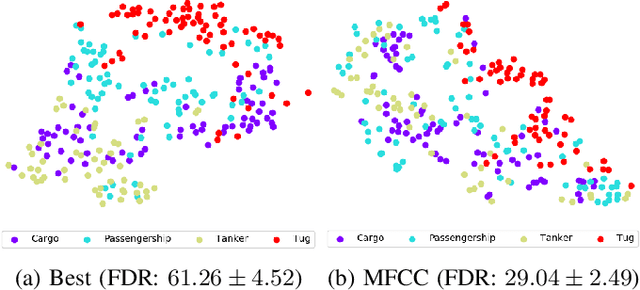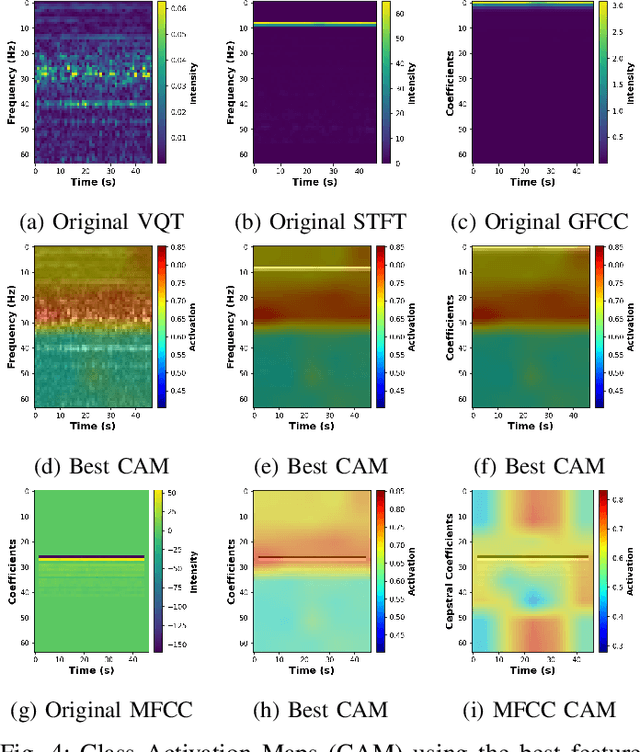Ethan Barnes
Investigation of Time-Frequency Feature Combinations with Histogram Layer Time Delay Neural Networks
Sep 20, 2024



Abstract:While deep learning has reduced the prevalence of manual feature extraction, transformation of data via feature engineering remains essential for improving model performance, particularly for underwater acoustic signals. The methods by which audio signals are converted into time-frequency representations and the subsequent handling of these spectrograms can significantly impact performance. This work demonstrates the performance impact of using different combinations of time-frequency features in a histogram layer time delay neural network. An optimal set of features is identified with results indicating that specific feature combinations outperform single data features.
Histogram Layer Time Delay Neural Networks for Passive Sonar Classification
Jul 25, 2023Abstract:Underwater acoustic target detection in remote marine sensing operations is challenging due to complex sound wave propagation. Despite the availability of reliable sonar systems, target recognition remains a difficult problem. Various methods address improved target recognition. However, most struggle to disentangle the high-dimensional, non-linear patterns in the observed target recordings. In this work, a novel method combines a time delay neural network and histogram layer to incorporate statistical contexts for improved feature learning and underwater acoustic target classification. The proposed method outperforms the baseline model, demonstrating the utility in incorporating statistical contexts for passive sonar target recognition. The code for this work is publicly available.
 Add to Chrome
Add to Chrome Add to Firefox
Add to Firefox Add to Edge
Add to Edge